Science
Where to Watch 2024 Total Solar Eclipse: Everything You Need to Know
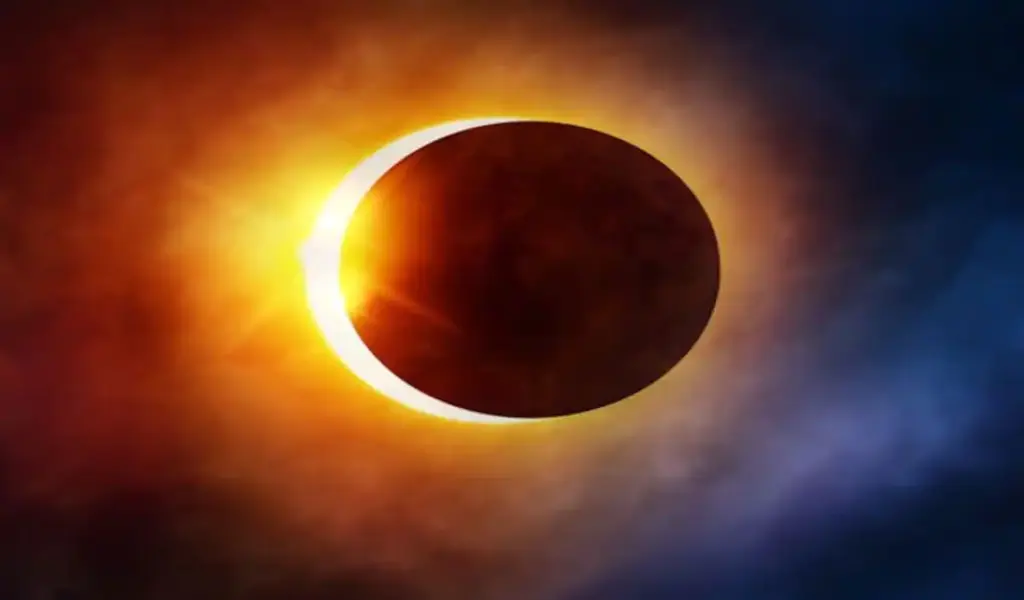
(CTN News) – There’ll be a total solar eclipse in 2024, bringing everything to a halt as we all look up in awe as it goes through a big part of the country. Here’s what you need to know about the eclipse in 2024, plus some tasty snacks to eat.
What Is a Total Solar Eclipse?
Solar eclipses happen when the moon is between Earth and the sun and casts a shadow over Earth.”
The website added that there are different types of eclipses, including a total solar eclipse, in which the moon completely obscures the sun; a partial eclipse, in which the moon does not completely block out all of the sun’s light; an annular solar eclipse, in which the moon is centered in front of the sun but does not cover the entire surface (this is when a “ring of fire” is visible); and a hybrid solar eclipse, which Space.com describes as “the rarest solar eclipse.”
This total eclipse, a combination of a total eclipse and an annular eclipse, sees the moon’s shadow move over the Earth.
How Often Does This Happen?
A solar eclipse only happens during a new moon phase, so it’s rare. NASA says two to five solar eclipses yearly are only visible in certain places. According to NASA, “most eclipses appear partial from one location, regardless of whether the event is total or annular.” The path of totality typically covers “less than 1% of the Earth’s surface.”
Something is shocking: “On average, it’s about 375 years between two total solar eclipses.” However, the interval can sometimes be much longer!” Several communities in the U.S. will see eclipses in 2017 and 2023 when the 2024 eclipse passes by.
What’s The 2024 Total Solar Eclipse Path?
It’ll enter the U.S. through Texas, then go northeast through Arkansas, Missouri, Kentucky, Illinois, Indiana, Ohio, Pennsylvania, New York, Vermont, and New Hampshire, before leaving through Maine. On science.nasa.gov, you can see the exact path of totality and specific timings.
What Time Is the Total Solar Eclipse Happening and How Can I Watch?
That depends on where you’re going. In North America, the eclipse path enters through Mexico at 11:07 a.m. PT and makes its way to Texas at 1:27 p.m. CDT. It leaves the country at 3:35 p.m. ET. Based on your ZIP code, NASA has a tool to tell you an approximate time. Time and Date will stream the event if you’re not near the path of totality.
Are There Any Food and Beverage Offerings for the Eclipse?
Almost every company under the sun is getting in on solar eclipse mania. Sonic’s Blackout Slush Float is already out there, while Jeni’s Ice Cream is releasing four new ice cream flavors with intergalactic backgrounds. And they’re not the only ones.
Oreo is releasing a Space Dunk Oreo Cookie, a drink served during the 2017 eclipse. Applebee’s is offering its Perfect Eclipse Margarita at some locations. Check with your nearest town for deals and parties at restaurants and hotels along the totality’s length.
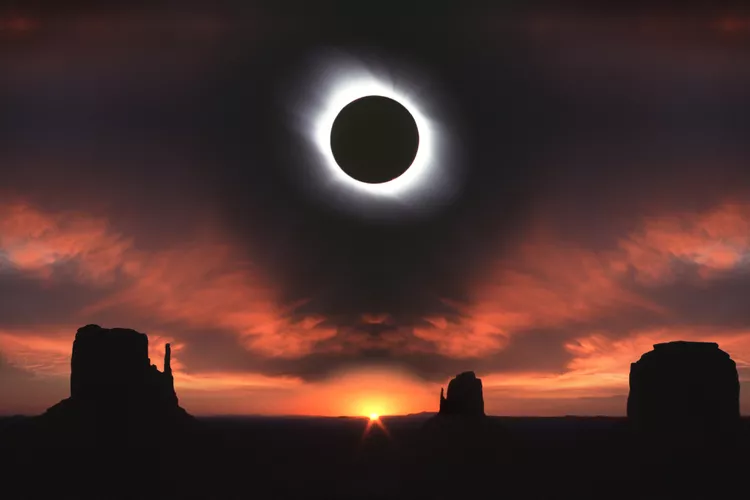
Is It Safe to Eat During an Eclipse?
NASA wants to put the kibosh on the myth that food prepared during an eclipse might be poisoned by radiation.
In a blog post, NASA wrote, “Total solar eclipses are terrifying, and their ghostly green coronas look scary, so it’s natural to want to make up fearful stories about them and find coincidences everywhere around you.”
Even though hundreds of people at the same location were not affected by the eclipse, some might argue that an accident with potato salad was related to the eclipse itself if someone gets food poisoning during an eclipse. Don’t worry, eat your snacks.
How to Watch an Eclipse Safely
While an eclipse isn’t as dangerous as you think, you should wear approved eyewear or a handheld solar viewer. As opposed to regular sunglasses, eclipse glasses are “thousands darker and should meet the ISO 12312-2 international standard,” NASA said. Check out Space.com’s list of approved eyewear.
Moreover, NASA says photographers shouldn’t look at the sun with a camera lens; viewers shouldn’t look at it with a telescope, binoculars, or any other optical device while wearing eclipse glasses or using a handheld solar viewer. The concentrated solar rays will burn through it and hurt your eyes..”
However, if you don’t have eclipse glasses, you can use a pinhole projector, “such as a hole punched in an index card,” to project the sun’s image onto any flat surface nearby. The eclipse makes for a fun science experiment anyway, and you can find all there is to know about it at science.nasa.gov.

Science
NASA Switches Off Instrument On Voyager 2 Spacecraft To Save Power
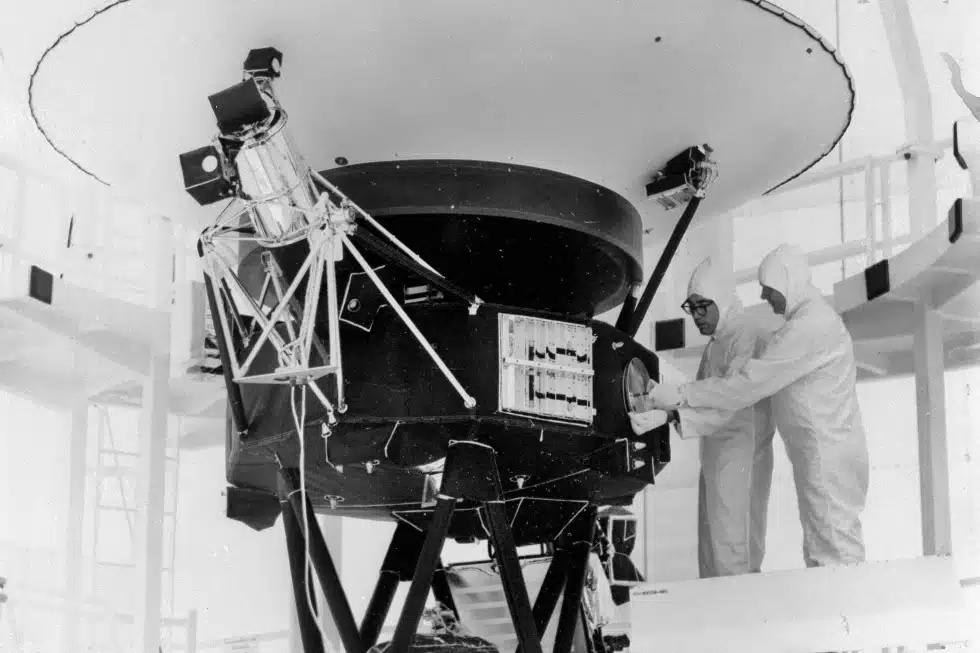
NEW YORK — To save power, NASA turned off another scientific equipment on its long-running Voyager 2 spacecraft.
NASA Switches Off Instrument On the Spacecraft To Save Power
The space agency announced on Tuesday that 2’s plasma science instrument, meant to study the movement of charged atoms, was turned off in late September to allow the spacecraft to continue exploring for as long as possible, which is estimated to be into the 2030s.
NASA turned off a suite of instruments on Voyager 2 and its twin, Voyager 1, after exploring the gas giant planets in the 1980s. Both are currently in interstellar space or the region between stars. The plasma instrument on Voyager 1 stopped working years ago and was finally shut off in 2007.
The remaining four instruments on 2 will continue to collect data on magnetic fields and particles. Its mission is to investigate the regions of space beyond the sun’s protective sphere.
NASA Switches Off Instrument On Voyager 2 Spacecraft To Save Power
It launched in 1977, is the only spacecraft to have visited Uranus and Neptune. It is now more than 12 billion miles (19.31 billion kilometers) from Earth. 1 is more than 15 billion miles (24.14 billion kilometers) beyond Earth.
SOURCE | AP
Science
Hurricane Kirk Could Cause Dangerous Surf Conditions Along The US East Coast
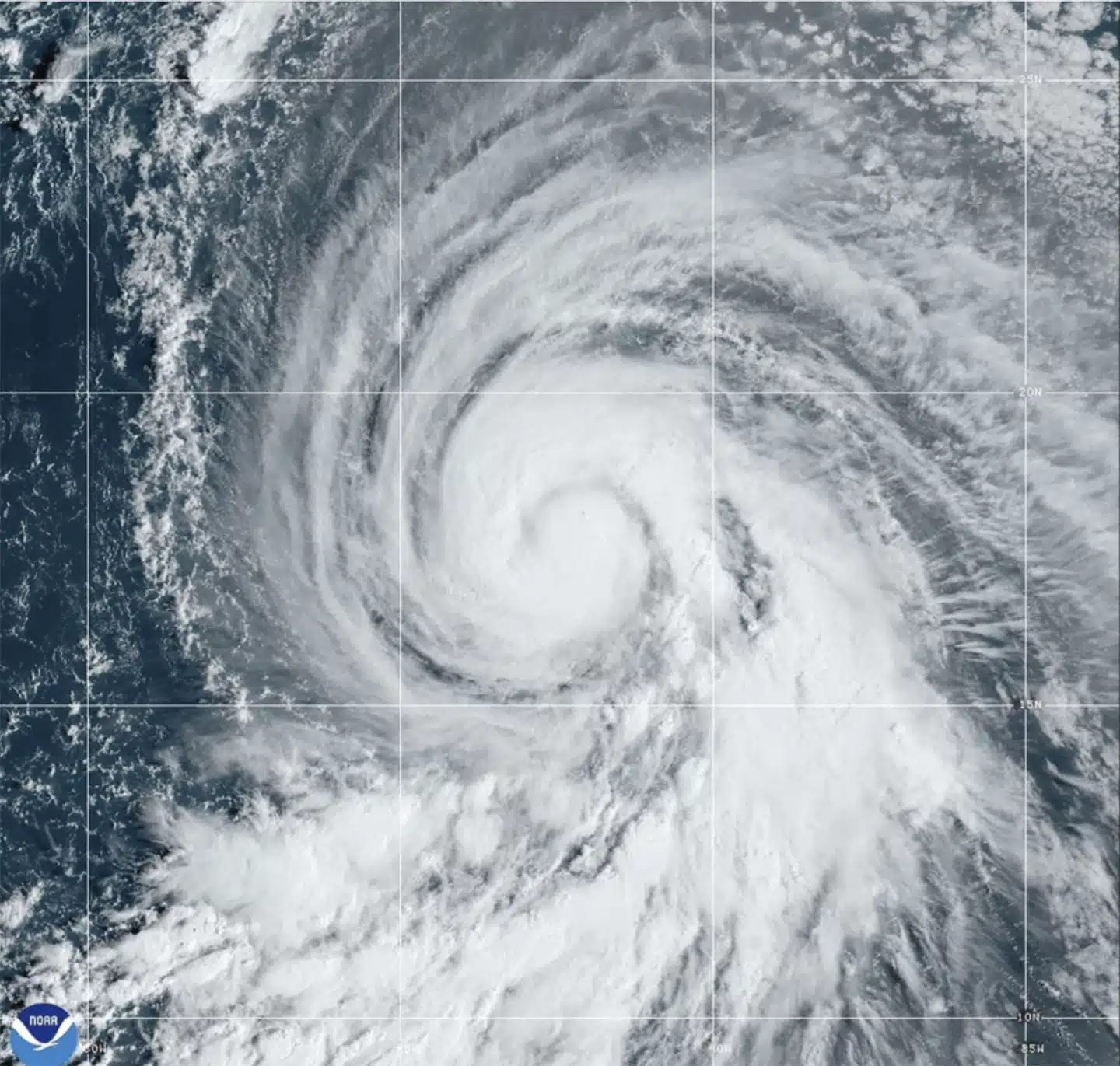
MIAMI — Hurricane Kirk’s waves could generate life-threatening surf and rip current conditions this weekend throughout the United States East Coast, as well as in Bermuda, the Greater Antilles, and the Bahamas, according to forecasters.
Kirk was a Category 3 hurricane in the middle Atlantic Ocean that might grow further but was predicted to stay away from land, according to the Miami-based National Hurricane Center on Thursday.
Hurricane Kirk Could Cause Dangerous Surf Conditions Along The US East Coast
Kirk-generated swells were forecast to reach parts of the Leeward Islands on Friday, Bermuda and the Greater Antilles on Saturday, and the East Coast and the Bahamas on Sunday, according to the center.
No coastal watches or warnings were in effect. The major storm was around 1,130 miles (1,820 kilometers) east of the Leeward Islands, with maximum sustained winds of 125 mph (205 km/h).
Meanwhile, Tropical Storm Leslie formed late Wednesday in the eastern Atlantic and is expected to strengthen into a hurricane in the following days, forecasters said. It was also not considered a threat to the land.
Hurricane Kirk Could Cause Dangerous Surf Conditions Along The US East Coast
The storm was about 540 miles (870 kilometers) southwest of Cabo Verde’s southernmost tip, with maximum sustained winds of 45 mph (75 kph), according to the center.
The storms raged in the Atlantic as rescuers in the United States Southeast sought for missing persons after Hurricane Helene struck last week, leaving a trail of death and devastation.
SOURCE | AP
Science
Giant Fossilised Footprint Of Dinosaur Found in China

(CTN News) – A team of palaeontologists believes they have discovered fossilized footprints of one of China’s largest raptors. The collection of five fossilized dinosaur footprints is half the length of a school bus.
The footprints were discovered in a dinosaur trackway in south-east China in 2020. Scientists believe dinosaurs walked over the muddy river during the Cretaceous period, leaving footprints. Some footprints have been preserved for tens of millions of years.
The dinosaur trackway was unearthed in Longxiang and is around the size of a hockey rink. Some of the footprints are unusually formed, with intact imprints of only two toes.
Fossilised footprint of megaraptor found in China

Giant fossil footprints lead to megaraptor dinosaur discovery in China
Raptors, or predatory birds, are often small and referred to as deinonychosaurs. For example, a Velociraptor is around the size of a turkey. Few raptors, such as the Utahraptor and Dakotaraptor, increased in size significantly, reaching lengths of 5 to 6 metres. The Triassic ichthyosaur was the largest raptor known until now.
According to the scientists, the predator would have attacked its prey with a pair of huge “killing claws” on each foot.
What scientists discovered recently in China is massive, far larger than the largest superpredator known to date.
Scott Persons of the College of Charleston in South Carolina, and his colleagues, added another large raptor to the list. They named it Fujianipus, and they believe it lived in East Asia some 96 million years ago.
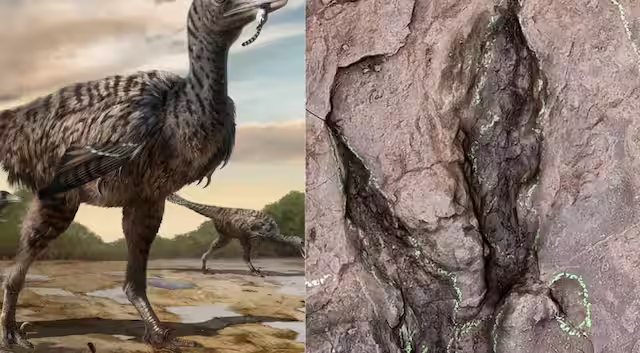
Scott Persons at the College of Charleston in South Carolina and his colleagues added another giant raptor to the list. They named it Fujianipus, and they say it lived in East Asia about 96 million years ago. Photograph:(Twitter)
Persons and his colleagues are currently working on areas of Fujianipus’ skeleton, therefore little is known. The investigators only discovered a few of its 36-centimetre-long imprints.
“Preservation conditions were right for footprints but not so great for bones,” Persons said. However, scientists are certain that the footprints belong to a raptor because each one contains the imprint of only two toes, which corresponds to the foot anatomy of raptors. Raptors generally have three toes, but they keep one off the ground to preserve the big claw at the tip from wear and tear.
People believe Fujianipus demonstrates that raptors had the ability to grow much larger and compete with the largest predatory dinosaurs on the landscape at the time – allosauroids, some of which exceeded 10 metres or more in length.
According to Persons, raptors had an advantage over allosauroids in terms of speed. However, without fossilized leg bones, the researchers cannot correctly measure Fujianipus’ speed.
-

 News4 years ago
News4 years agoLet’s Know About Ultra High Net Worth Individual
-
Entertainment2 years ago
Mabelle Prior: The Voice of Hope, Resilience, and Diversity Inspiring Generations
-
News11 years ago
Enviromental Groups Tell Mekong Leaders Lao Dam Evaluation Process Flawed
-

 Health4 years ago
Health4 years agoHow Much Ivermectin Should You Take?
-

 Tech3 years ago
Tech3 years agoTop Forex Brokers of 2023: Reviews and Analysis for Successful Trading
-

 Lifestyles3 years ago
Lifestyles3 years agoAries Soulmate Signs
-

 Entertainment3 years ago
Entertainment3 years agoWhat Should I Do If Disney Plus Keeps Logging Me Out of TV?
-

 Health3 years ago
Health3 years agoCan I Buy Ivermectin Without A Prescription in the USA?
